‘Yellowjackets’: Director Liz Garbus Talks Shauna’s Baby, Being Inspired by ‘Rosemary’s Baby’ and That Stick Figure
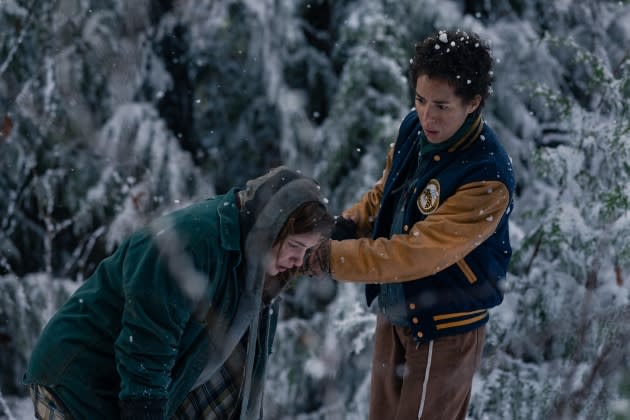
SPOILER ALERT: This story contains spoilers from “Qui,” the sixth episode of “Yellowjackets” Season 2, now streaming on Showtime.
One of the most compelling mysteries in Showtime’s “Yellowjackets” is finally solved in this week’s episode — what happened to teen Shauna’s (Sophie Nélisse) baby?
More from Variety
'Succession': Justin Kirk Breaks Down the Election and How Mencken Differs From Trump
How to Watch the 'Vanderpump Rules' Finale and Reunion Online
The episode sees Shauna in labor, with her fellow Yellowjackets surrounding and supporting her as she experiences contractions before finally giving birth. She passes out, before coming to and holding her baby. Things aren’t going smoothly, though, since a starving Shauna isn’t able to produce enough milk. Later, she wakes from her sleep, with her baby not in his bed. She freaks out, and looks for the Yellowjackets — and stumbles into a nightmare of them eating the baby.
Then Shauna wakes from her sleep, to find that her baby boy did not make it, and what we thought we were seeing was all a dream.
Director Liz Garbus makes her “Yellowjackets” debut in “Qui,” filming both of Shauna’s birth scenarios. One, an extreme hallucinatory experience, the result of starvation, during which she sees her friends indulge in cannibalistic behavior by eating her son; the other, a pragmatic truth about the grim reality of being pregnant in the wilderness without food, care and access to a doctor.
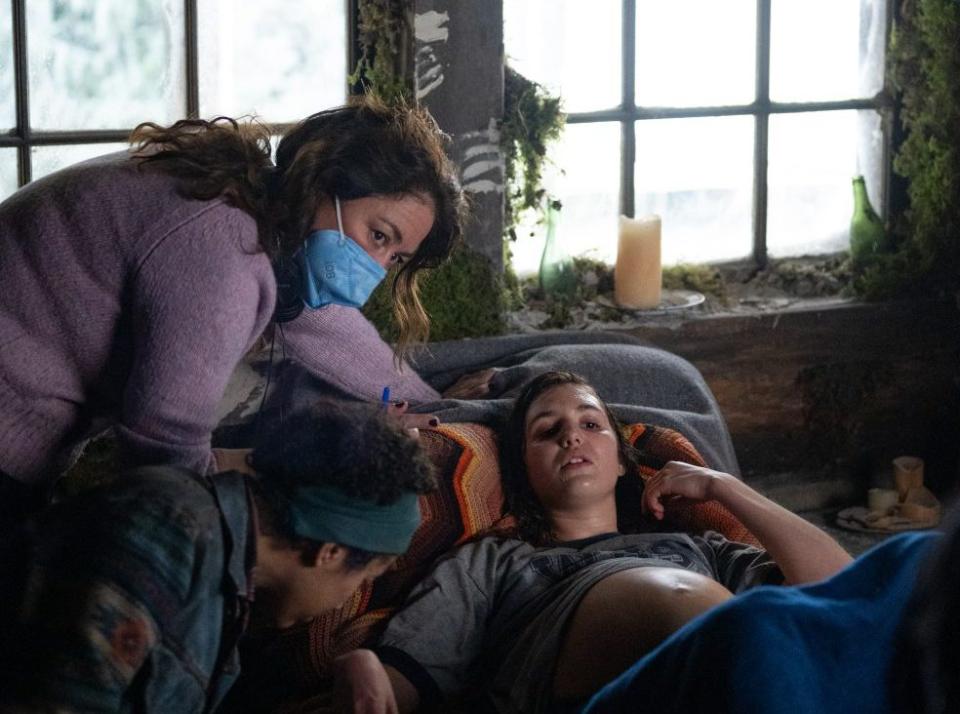
A two-time Oscar nominee, writer, producer and director, Garbus is a celebrated filmmaker who straddles between documentary storytelling and scripted work. She runs her production company, Story Syndicate with husband Dan Cogan. Their titles have included Netflix’s “Harry & Meghan” docuseries, which Garbus directed, and “Stolen Youth: Inside the Cult at Sarah Lawrence,” which she and Cogan produced.
She also directed the Season 4 finale of “The Handmaid’s Tale” and Apple TV+’s “City on Fire.” Up next is the Untitled Orphan project starring Ellen Pompeo.
Garbus spoke with about Variety how she worked closely with Nélisse, sharing birthing videos — and how “The Handmaid’s Tale” and “Rosemary’s Baby” influenced her visual work.
“Qui” is also the episode when the adult Yellowjackets have finally all gathered in one place, at Lottie’s “wellness center.” For its final shot, an overhead view reveals the show’s infamous stick figure. Does Garbus know what it symbolizes?
Shauna finally gives birth in this episode, and the audience learn its fate. What ideas did you have about framing this story?
There are people out there who have lost babies and have had miscarriages, so it’s a heavy episode. There are all the fantasy and horror and genre elements that “Yellowjackets” plays with, but this is a very emotionally raw moment, and not funny at all. It’s pivotal. It’s a moment of trauma, and change that is still with adult Shauna [Melanie Lynskey]. So, I approached it with a level of seriousness, curiosity and a desire to prepare.
I sent Sophie birthing videos and medical videos, and how it might be different in the wild. We looked at “The Handmaid’s Tale,” and the episode where Elisabeth Moss’ character gives birth all by herself. But we took it seriously, but we knew we wanted to have fun with that dream timeline.
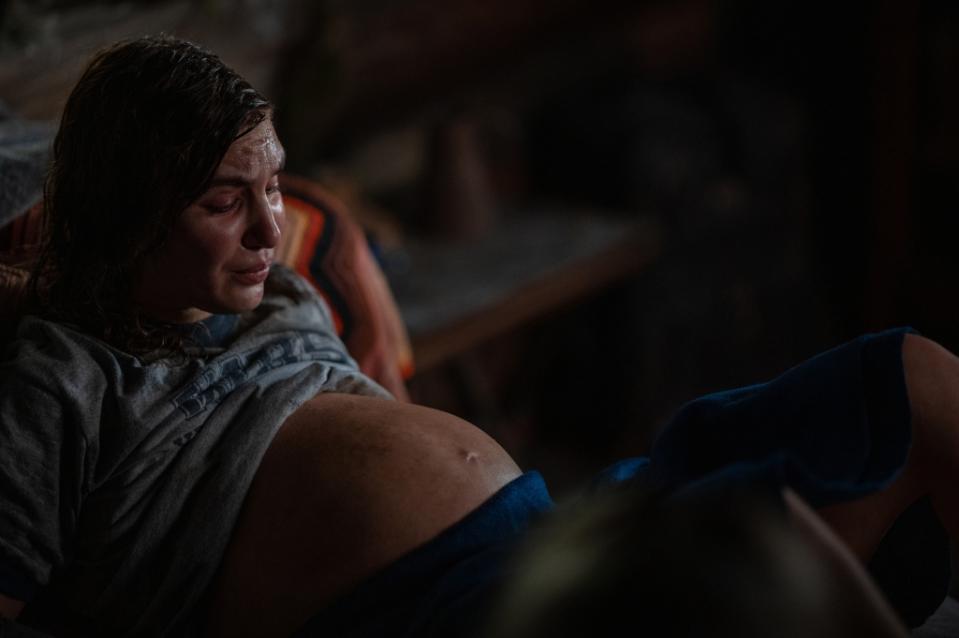
What were some of those differences you showed with the dream timeline versus reality?
In “Yellowjackets,” there are these two dueling tensions. One is the spiritual, magical element that Lottie [Courtney Eaton] embodies, and there are the pragmatic, rounded elements that Shauna and Natalie [Sophie Thatcher] represent — and in this episode, you see those two divergent strands come into battle with one another. Lottie and her crew are really believing that spiritual practices and amulets will make this baby safe. Taissa [Jasmin Savoy Brown] gets so scared that she engages in the magic with Van [Liv Hewson] of holding the amulet.
But sadly, it’s the pragmatic timeline that prevails. If you’re near starving, and you’re in the wild, you’re probably not going to have a healthy pregnancy.
When we entered into the dream sequences, what I call the Lottie theme, there were slight differences to camera movement and sets that we made with Easter Eggs for people who might want to watch the episode 32 times. The Lottie reality is also nightmarish — the feast on the baby. We looked at “Rosemary’s Baby” and the scene where Mia Farrow comes into the room and sees the grotesque faces of all the neighbors. And we had fun figuring out how far out to take that particular moment for Shauna.
How long did it take to film the birthing sequence, and how hard was that to film for Sophie?
Sophie is an extraordinary young actor who is going to do so many great things in her career. That episode was a heavy lift. She had to go through this emotionally wrenching, devastating arc over five days.
Everyone knew this was a big one for her, so it was about, how can we support her? We did her coverage first, so it wasn’t like hanging over her. I probably have 12 different shots by that bedside — we did her closeups first so she got that all out, and her scene-mates were so generous with her.
Sophie was so nervous about that scene. She took it seriously, and wanted it to feel real so that other people who had gone through childbirth and losing babies would relate.
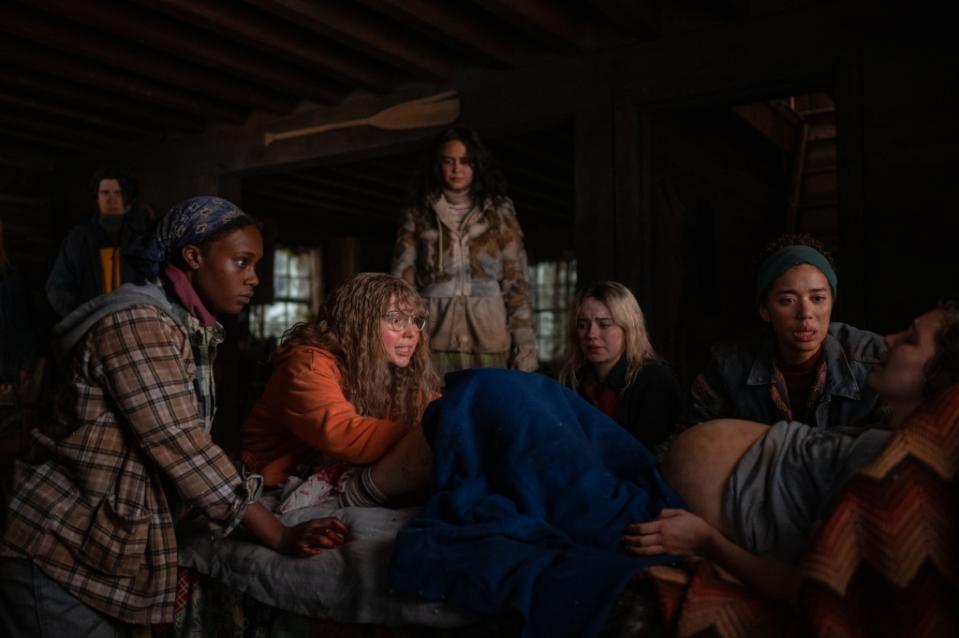
Switching lanes. The episode also brings the adult Yellowjackets together, and all roads have led to this episode in the present-day timeline. What was it like to be tasked with that moment?
It was so much fun to take all the adults from their various corners and bring them together for this scene. First, Misty [Christina Ricci] shows up, and you have that energy between Misty and Lottie [Simone Kessell].
The compound itself was such fun. To shoot that outdoor scene when Van [Lauren Ambrose] and Tai [Tawny Cypress] pull up in their car, Shauna pulls up in her car, and we have Nat [Juliette Lewis] emerging from the woods — and Misty basket weaving.
Lottie leads her prayer circle by the water, and the drone shot where we reveal the stick figure. We are on the precipice of something great for the rest of the season. What we were doing was we were just teeing up the rest of the season.
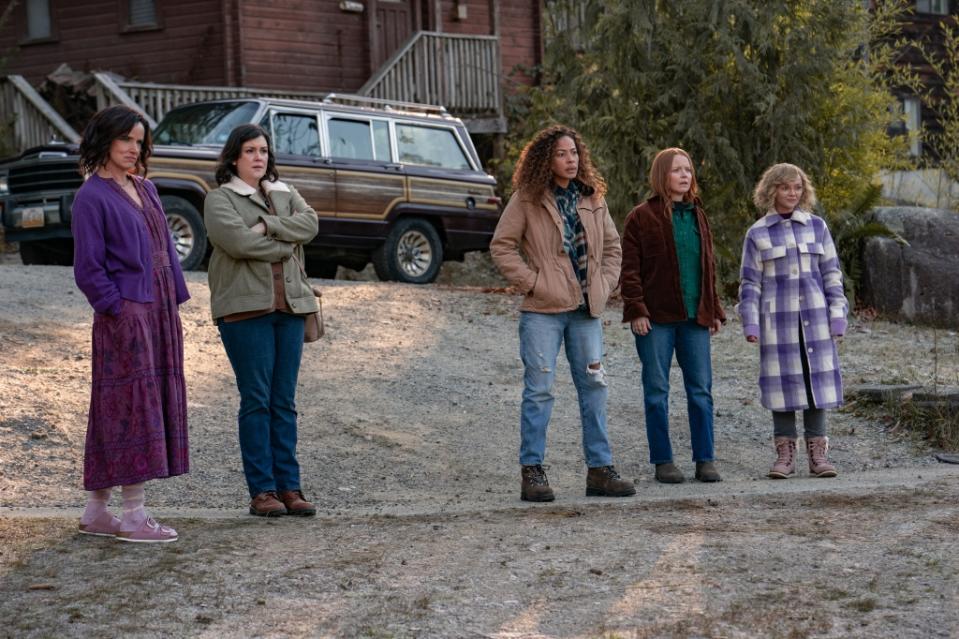
Do you think it’s hard to trust Lottie after that reveal?
Both Simone and Courtney Eaton are so great at delivering this performance, which feels very innocent, but it has this tinge where you don’t trust her, and you’re never sure about them. And that’s tricky with that performance, because they have this innocence, kindness and nurturing in them.
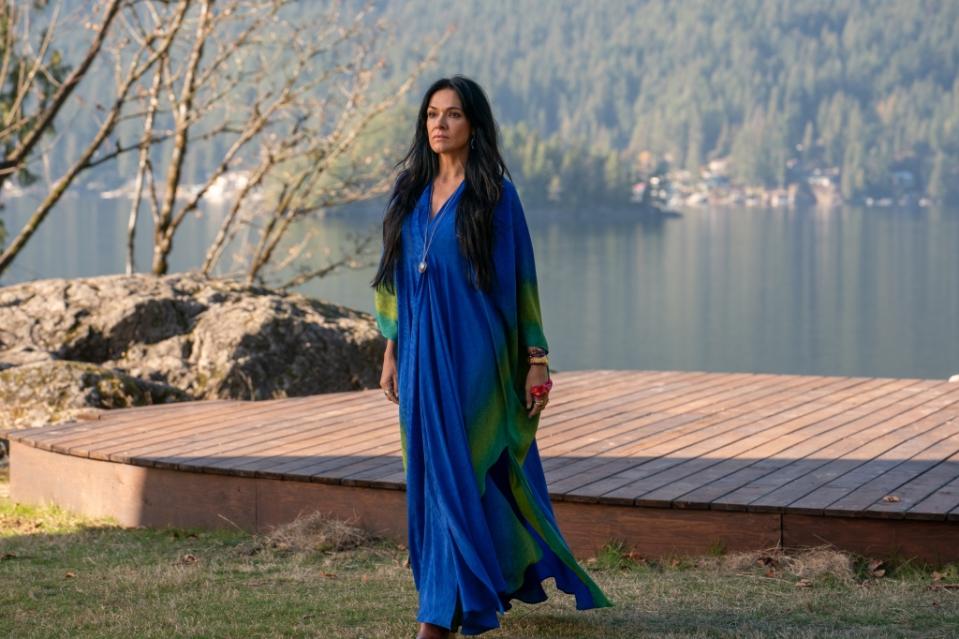
Do you know what the stick figure means?
No, but I have some thoughts. It’s nothing that I could explain. Even if I was allowed to explain it as something, I don’t think I could even explain enough to make sense to myself. I’m super curious how they how they’ll spill that.
Talking about your work in general, it’s great seeing you do scripted and docs, but what is it about scripted that pulls you in?
I love working with actors. And on the shows that I’ve worked on, I feel like I’ve been able to work with so many incredibly talented actors, and do very serious, deep work with them. None of the shows have been formulaic: There has just been great writing and acting. I get to roll up my sleeves, and get into that with these talented actors.
All of my years in documentary, sitting at a monitor, watching real people go through crazy experiences, you get a pretty good nose for what feels like bullshit and what feels really true. But even more than that, how humans react in crises, and trying to take some of that into the realm of performance with actors, so that they’re always inventing something new.
At the end of the day, I love crafting and shaping stories. If I’m able to go back and forth like this, I think each genre is going to enrich the other. I hope I can keep doing both them, because I do think it just makes me a better storyteller.
Do you have a moment that sticks with you from this episode?
After we shot the scene when Sophie comes out of comes to consciousness and is presented with the idea that her baby didn’t make it, she’s doing all these takes where she’s in incredible pain, disbelief and screaming at her friends. We didn’t do that many takes, because we were also being conscious of Sophie’s voice and not having her lose it. I called cut on the last take, and I said, “That’s it. It’s not gonna get better than that.”
I went over and I hugged her, and I looked around the bed everybody was by the bedside, and all the other Yellowjackets the young actors were in tears. They were all crying, because of the pain that Sophie communicated in her performance. I still get chills thinking about it. It was so powerful. It was an extraordinary moment of acting, and also of community support that these young actors have for each other.
Would you do another episode in Season 3?
I’d love to go back into Season 3 if they want me. I just love working with those folks so much, and it’s such a great show.
Are you allowed to say anything about the Ellen Pompeo Untitled “Orphan” project?
It’s my next scripted project. I’m so excited to work with Ellen to craft a character so different than Meredith Grey, and work with her on that next chapter of her incredible career. That, to me, is a challenge.
This interview has been edited and condensed.
Best of Variety
Tony Predictions: Best Musical -- Four Stand Poised to Give ‘Kimberly Akimbo’ Some Competition
This 'Fast and Furious' Arcade Cabinet Allows You to Step Behind the Wheel as Dom Toretto
Sign up for Variety’s Newsletter. For the latest news, follow us on Facebook, Twitter, and Instagram.

 Yahoo News
Yahoo News 
